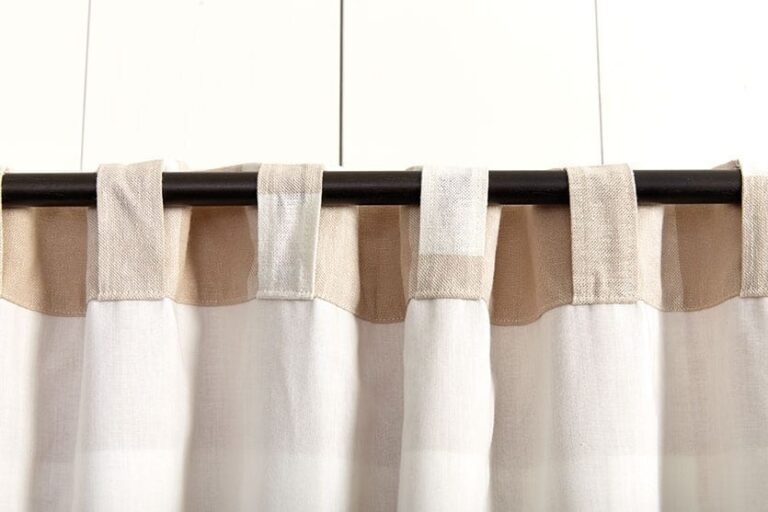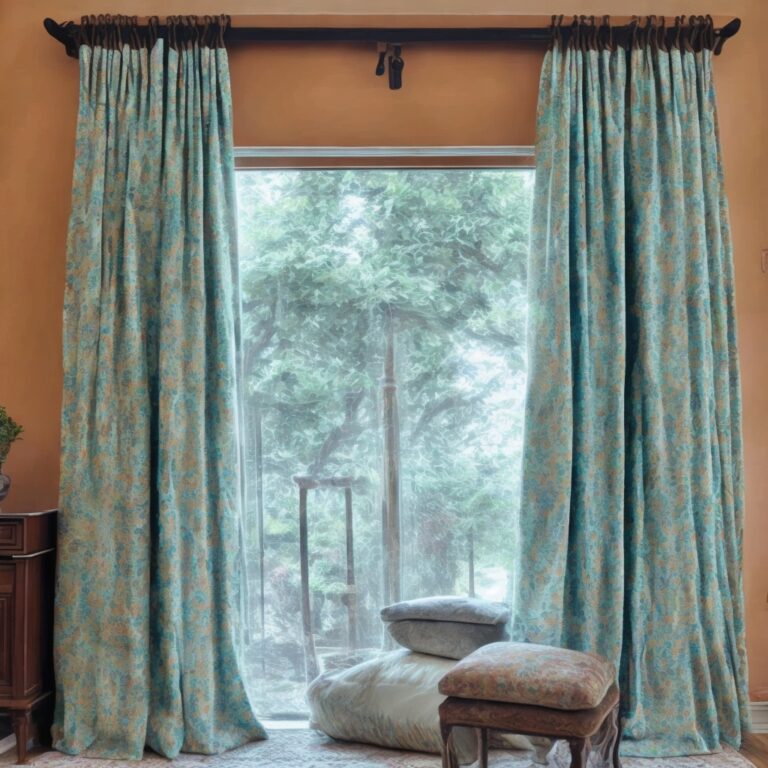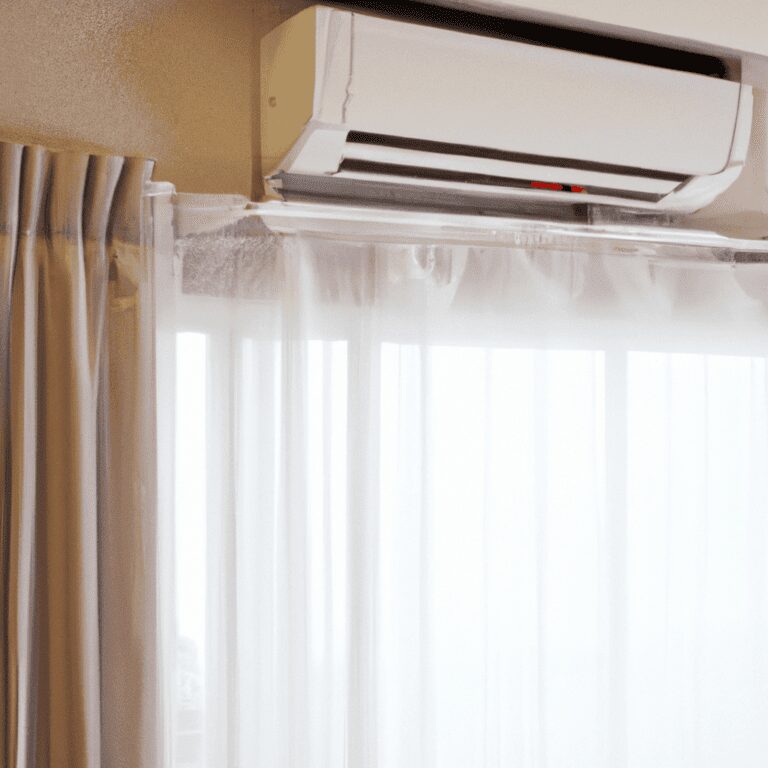Do shower curtains need liners? A Comprehensive Guide
Shower curtains are an essential item for any bathroom as they provide privacy, prevent water from splashing onto the bathroom floor, and also add a touch of aesthetic appeal. However, the question that often arises is whether or not shower curtains need liners. Do they really serve a purpose, or are they just an unnecessary addition to the bathroom setup? In this article, we will delve deeper into this topic and explore the importance of understanding do shower curtains need liners. We will shed light on various points that will help you make an informed decision about whether or not you require a shower curtain liner. So, sit back, relax, and let’s dive in.
Benefits of Using a Shower Curtain Liner
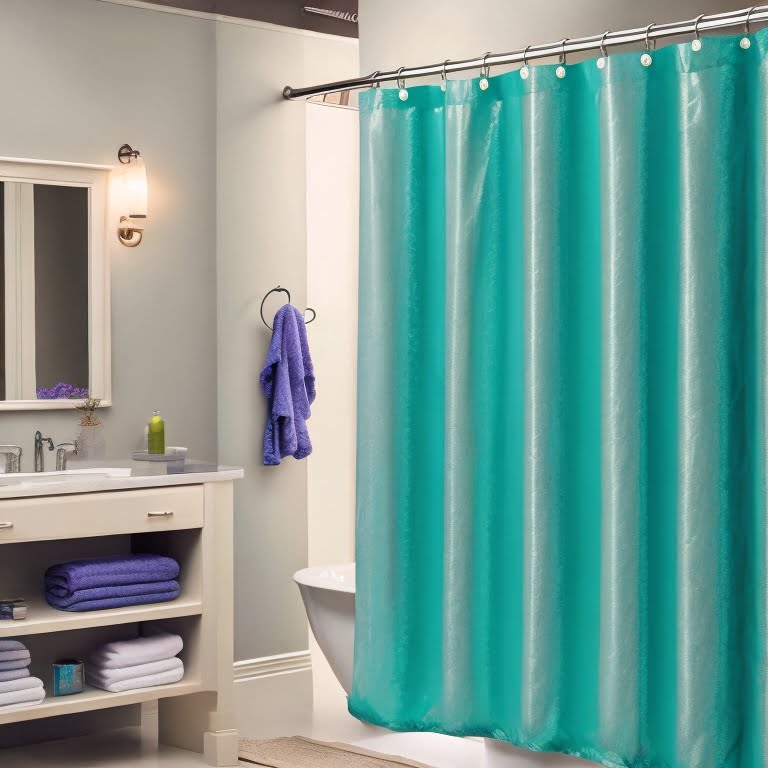
One of the primary benefits of using a shower curtain liner is that it can prevent water from splashing outside the tub or shower stall. This is especially important for those with smaller bathrooms, as it can help to prevent floor damage and avoid slip-and-fall accidents. In addition to this, a shower curtain liner can also protect the shower curtain from mold, mildew, and soap scum. This is because liners are typically made from a waterproof material that can resist the growth of these types of contaminants.
By using a liner, you can extend the life of your shower curtain and avoid having to replace it as frequently. Along with this, a shower curtain liner can also enhance privacy while showering, as it can provide an additional layer of coverage between you and anyone outside the shower. This can be especially important for those who share a bathroom or who have a transparent or semi-transparent shower curtain.
By providing additional privacy, a shower curtain liner can make showering a more comfortable and enjoyable experience overall. In summary, the benefits of using a shower curtain liner are numerous and significant. From preventing water damage to extending the life of your curtain, investing in a liner can be a wise decision for any bathroom setup.
Do Shower Curtains Need Liners?
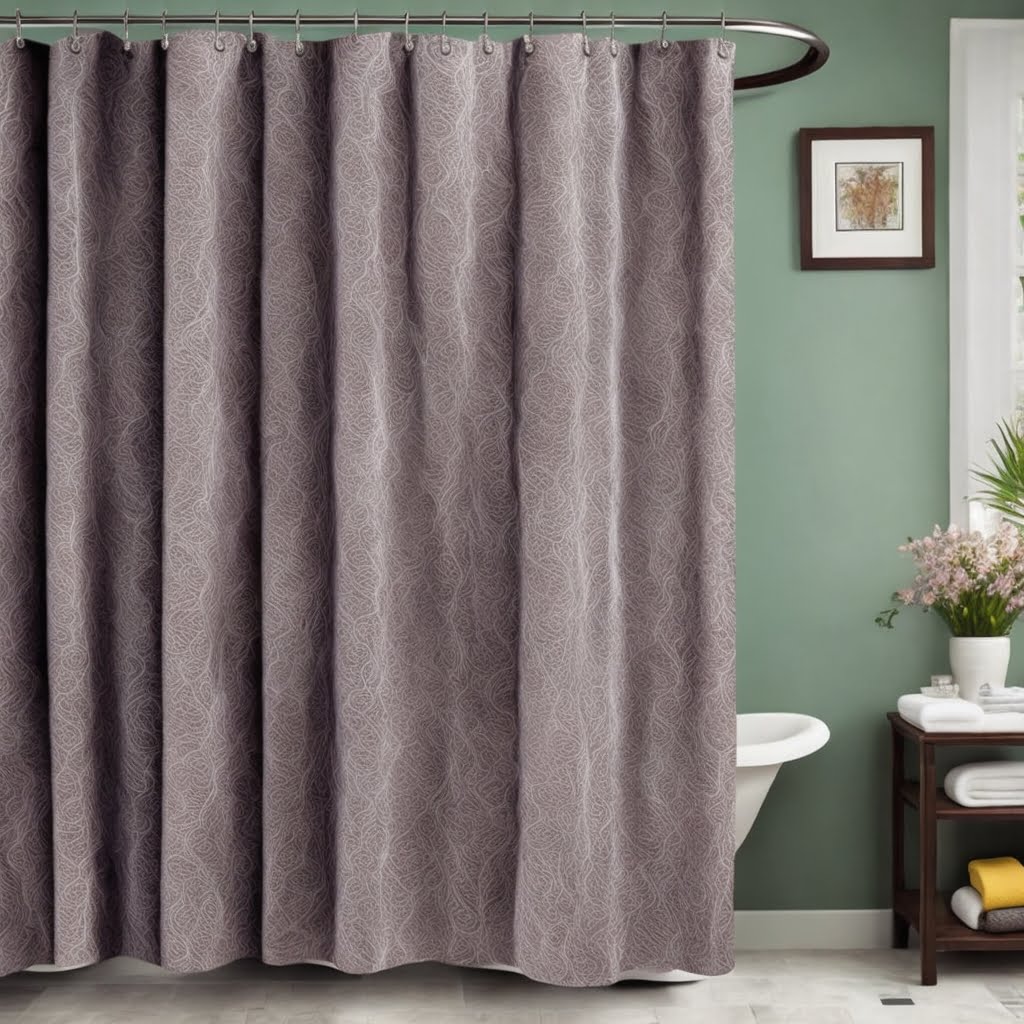
When it comes to choosing a shower curtain for your bathroom, the question of whether or not it needs a liner can be a perplexing one. The simple answer is that it depends on the situation. In reality, there are certain instances where a liner is necessary, while there are also scenarios where it’s not mandatory. One such scenario is in a bathroom that has a glass shower door.
Glass shower doors don’t require a liner as they offer the necessary privacy and prevent water from spilling onto the bathroom floor. Another situation where a liner may not be necessary is in a bathroom with a shower curtain that has waterproof material. Such material is designed to repel water, and as such, a liner may not be needed.
However, there are situations where a shower curtain liner is non-negotiable. For instance, where the shower curtain material is not water-resistant, a liner is required to prevent water from seeping through and causing mold and mildew to accumulate on the bathroom walls. Additionally, a shower curtain liner would be necessary where the shower has an inadequate water flow system, which can cause excess water to spill over the curtain and onto the bathroom floor.
Lastly, the design and material of a shower curtain also have a significant impact on whether or not a liner is necessary. For instance, a shower curtain that is made from vinyl material is less likely to require a liner as it is waterproof and easy to clean. On the other hand, shower curtains made from cotton or polyester fabric are more susceptible to water seepage and mildew and would require a liner.
Furthermore, a darker-colored curtain may be more susceptible to mold and mildew compared to a lighter-colored one. In summary, while a shower curtain liner may not always be necessary, it’s essential to consider the design and material of the curtain when making a decision.
Types of shower curtain liners
Shower curtain liners serve an important purpose in the bathroom. They protect the shower curtains from direct contact with water, which helps to prevent mold and mildew growth. In addition, using a liner helps to keep the bathroom floor dry and prevents slips and falls.
Plastic liners:
One of the most common types is the plastic liner. This type of liner is affordable, easy to clean, and provides a waterproof barrier between the shower and the rest of the bathroom. However, plastic liners can be flimsy and may tear easily over time.
Fabric liners:
Another popular option is the fabric liner. Fabric liners offer a softer, more elegant appearance than plastic liners. They are also more durable than plastic liners, and they can be machine-washed for easy maintenance. However, fabric liners are not waterproof on their own, so they may require an additional waterproof barrier such as a vinyl backing.
Mildew-resistant liners:
For those who are concerned about mold and mildew growth, a mildew-resistant liner may be the best option. These specially-treated liners are designed to resist the growth of mold and mildew, which is a common problem in damp bathroom environments. While mildew-resistant liners may be a little more expensive than other types of liners, they can save homeowners a lot of time and effort in terms of cleaning and maintenance.
Choosing the Right Liner Material
When it comes to choosing the right liner material for your shower curtain, there are several factors that you need to consider. The most common liner materials are vinyl, fabric, and PEVA/EVA. Each of these materials has its advantages and disadvantages, so it’s important to understand them before making a decision.
Vinyl liners are perhaps the most popular option for shower curtains. They are affordable and easy to clean, making them a practical choice for many homeowners. However, they are made from PVC, which is a type of plastic that can release toxic chemicals into the environment when disposed of. Additionally, vinyl liners are not very eco-friendly as they are not biodegradable.
For those who are looking for a more eco-friendly and non-toxic option, there are several alternatives to vinyl liners. One of the most popular options is PEVA (polyethylene vinyl acetate) or EVA (ethylene vinyl acetate) liners. These materials are similar to vinyl in terms of their durability and water resistance, but they are free of harmful chemicals such as PVC and phthalates. PEVA and EVA liners are also biodegradable, making them a more sustainable option for the environment.

Another option for liner materials is fabric. Fabric liners are often made from materials such as cotton, polyester, or nylon. They offer a more luxurious and elegant look than vinyl or PEVA/EVA liners, which can be appealing to some homeowners. However, fabric liners are not as water-resistant as their plastic counterparts. They are also more difficult to clean and may require more maintenance.
When choosing the best liner material for your shower curtain, it’s important to consider your individual needs and preferences. If you’re looking for an affordable and easy-to-clean option, vinyl may be the best choice for you. If you’re concerned about the environment or want a non-toxic option, PEVA or EVA liners may be a better choice. And if you want a more luxurious and elegant look, fabric liners may be the best option for you. Ultimately, it’s important to take the time to research and weigh your options before making a decision. By understanding the advantages and disadvantages of each material, you can choose the best liner material for your particular needs.
Proper installation and maintenance of shower curtain liners
When it comes to shower curtain liners, proper installation and maintenance are crucial for a seamless and hygienic bathing experience. To ensure the effectiveness of your liners, follow these essential steps. Start by securely installing the liners alongside your shower curtains, ensuring they are properly aligned and hanging straight. Regular cleaning and washing of the liners are highly recommended to prevent the build-up of mold, mildew, and soap scum.
Be sure to use mild cleaning agents and follow the manufacturer’s instructions for the best results. Additionally, inspect the liners periodically for signs of damage or wear, such as tears or holes, as these can compromise their functionality. By paying attention to the proper installation and maintenance of your shower curtain liners, you can enjoy a pristine and inviting bathroom atmosphere while extending the lifespan of your curtains.
The Environmental Impact of Shower Curtain Liners
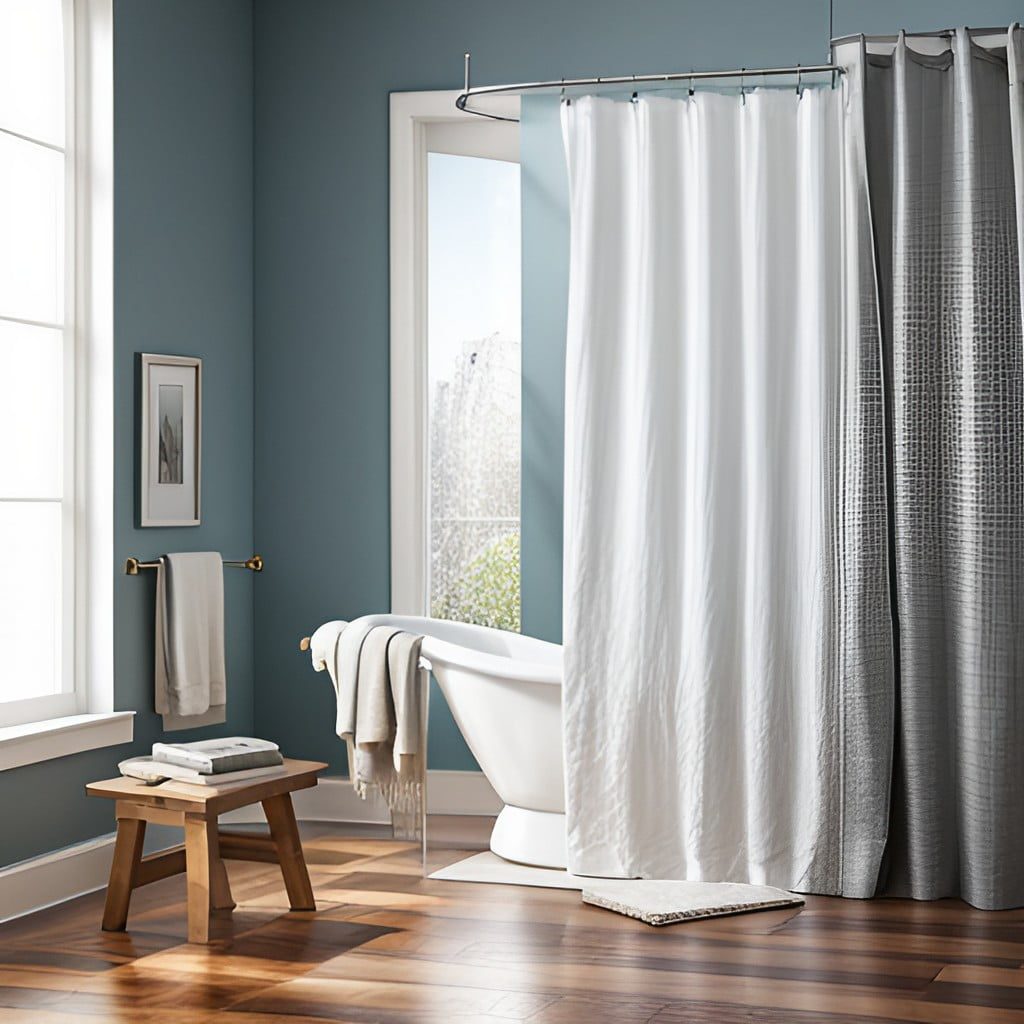
Shower curtain liners may seem like a minor detail in bathroom decor, but their use can have a significant environmental impact. These plastic liners are typically made from PVC (polyvinyl chloride) which is a non-biodegradable material that is harmful to the environment. PVC production releases toxic chemicals such as dioxins, which can harm wildlife and ecosystems when not disposed of properly. Moreover, liners require energy to manufacture and transport, contributing to greenhouse gas emissions.
However, several eco-friendly alternatives to traditional shower curtain liners can mitigate the environmental impact. One option is to invest in a fabric shower curtain, which does not require a liner and can be washed easily. Fabric curtains are typically made from cotton, hemp, or polyester, which are more sustainable materials than PVC. Another alternative is to use a biodegradable liner that is made from materials such as EVA (ethylene vinyl acetate) or PEVA (polyethylene vinyl acetate). These materials are less harmful to the environment and biodegrade over time, reducing their impact on the earth.
To responsibly dispose of or recycle old liners, it is important to check with your local waste management facility or recycling center for specific guidelines. Some facilities may accept PVC liners for recycling, while others may require them to be disposed of as regular trash. It is essential to ensure that the liners are clean and free from any soap or mildew residue before disposal. Alternatively, consider reusing the liners for other household chores such as painting drop cloths, as they can provide a protective barrier.
Alternatives to shower curtain liners
When it comes to alternatives for shower curtain liners, there are a few options worth considering. These alternatives provide different benefits and can be suitable for various preferences and bathroom setups. Here are three popular choices:
Glass Shower Doors:
Installing glass shower doors can offer a sleek and modern look to your bathroom while eliminating the need for a shower curtain and liner altogether. Glass doors provide a barrier against water splashes, and they are easy to clean and maintain. However, they might require professional installation and can be more expensive compared to other alternatives.
Waterproof Fabric Shower Curtains
If you prefer the aesthetics of a fabric shower curtain but want a water-resistant option, consider using a waterproof fabric curtain. These curtains are specially designed to repel water, reducing the need for a liner. They are available in various colors and patterns, allowing you to personalize your bathroom decor while ensuring functionality.
Disposable Plastic Curtain Liners:
For a convenient and hassle-free option, disposable plastic curtain liners are a viable choice. These liners are typically made of thin plastic material and can be easily replaced when they become worn or dirty. They provide a temporary solution for maintaining hygiene and protecting your shower curtains. However, keep in mind that they are not as durable or environmentally friendly as other alternatives.
Frequently asked questions
Do I really need a shower curtain liner?
While not strictly necessary, shower curtain liners offer several benefits. They protect your shower curtains from water damage, prevent water leakage, help prevent mold and mildew growth, and provide privacy during showers.
What materials are commonly used for shower curtain liners?
Shower curtain liners are often made of plastic, such as vinyl or PEVA (polyethylene vinyl acetate). Fabric liners made of polyester or nylon are also available.
How do I install a shower curtain liner?
Installing a shower curtain liner is straightforward. Simply hang it on the shower rod or hooks, positioning it on the inside of the bathtub or shower area, behind the decorative shower curtain.
How often should I clean my shower curtain liner?
It is recommended to clean your shower curtain liner regularly, ideally every few weeks. Follow the manufacturer’s instructions for cleaning, as some liners can be machine-washed, while others may require hand-washing.
Can I wash a shower curtain liner in the washing machine?
Many plastic shower curtain liners can be machine-washed on a gentle cycle using mild detergent. However, it’s essential to check the care instructions provided by the manufacturer.
How long do shower curtain liners last?
The lifespan of a shower curtain liner varies depending on factors such as material quality, frequency of use, and maintenance. On average, a well-maintained liner can last anywhere from 6 months to a few years.
Can I use a fabric shower curtain without a liner?
Fabric shower curtains are typically not waterproof on their own. Using a liner with a fabric curtain is recommended to provide the necessary waterproofing and protect the fabric from moisture damage.
Are there eco-friendly options for shower curtain liners?
Yes, there are eco-friendly alternatives available. Look for shower curtain liners made from environmentally friendly materials such as recycled plastic or biodegradable materials.
Can I use a shower curtain liner with a glass shower door?
Shower curtain liners are not typically needed with glass shower doors, as the doors themselves provide a barrier against water splashes. However, some people may still choose to use liners for added protection or privacy.
Are there any alternatives to using shower curtain liners?
Yes, alternatives include using glass shower doors, waterproof fabric shower curtains, or disposable plastic curtain liners. Each option offers different advantages, so choose the one that suits your preferences and needs.
Conclusion
To maintain a clean and functional bathroom, it is crucial to recognize the significance of shower curtain liners and their appropriate installation and upkeep. Shower curtain liners safeguard against water seepage, and mold formation, and provide privacy during showers. Using liners, you can increase the lifespan of your shower curtains, facilitate easy cleaning and maintenance, and save expenses in the future.
For proper installation and maintenance, be sure to securely install the shower curtain liners and ensure they hang straight and are properly aligned with the curtains. To prevent mold, mildew, and soap scum build-up, clean the liners regularly with mild cleaning agents. Additionally, inspect the liners periodically for signs of wear or damage to keep them effective.
There are various alternatives to shower curtain liners that you may want to consider. These include glass shower doors, waterproof fabric shower curtains, and disposable plastic curtain liners. To make the best choice for your needs, take into account your budget, design preferences, and maintenance requirements.
To ensure a clean and enjoyable shower, focus on correctly installing and maintaining your shower curtain liner or considering other options. By making informed choices, you’ll create a hygienic atmosphere and lengthen the life of your shower curtains.

I am Stacy Roberts, an experienced curtains expert. I spend most of my time writing about curtain design for various magazines and websites, including writing many blog posts on the topic for Homepicks24.com. I love helping people find the perfect curtains for their homes and take great pride in my work. When I'm not writing or helping people choose curtains, I enjoy spending time with my wife and two young children. I also love playing tennis and going to the beach. I believe that having a beautiful home with well-chosen curtains is essential to creating a special atmosphere of comfort and serenity, and thus I strive to help people find the right window treatment for their homes.


